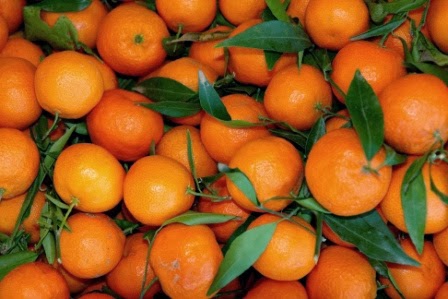There's new energy in the air, a sense of excitement with an overlay of glee. Chinese New Year (CNY) is coming. Its Eve is next Thursday (the 30th) and preparations are under way.
Fields, an online grocer from whom we buy most of our proteins and some other edibles, published an article on Chinese New Year foods that I found really interesting. Here's what
you eat -- and why -- on Chinese New Year:
Fish. The word for fish in Chinese ("yu") sounds similar to the word for surplus; the dish is thus a symbol for a year of plenty.
It's served whole, representing completeness, but you don't eat the whole thing. Mike's mom had told us that some should be leftover for our ancestors; according to this article, the head and the tail are to be eaten on New Year's Day, symbolizing a smooth transition from one year to the next.
Cake. The term for this New Year's cake is "nian gao," which sounds like "higher year" in Chinese. It's sticky and sweet, made of glutinous rice flour, coconut milk, and sugar. (How come I haven't had this yet?)
Dumplings. These tasty bites take on several special meanings during the holiday:
- they symbolize wealth;
- the "jiao" in "jiaozi" (Chinese for dumpling) also means change;
- they look like "tael," an old Chinese currency.
Apparently, some cooks will place a coin in one of the dumplings, promising prosperity in the new year to the lucky recipient.
Mandarins. In season now, these little gems represent gold and wealth. Their Chinese name (which translates to "golden orange") sounds similar to luck or fortune in certain dialects.
Rice dumplings (or, as I like to call them, balls). Remember these? In some parts of the country, these are eaten on New Year's Day; in others, they're eaten on the 15th day of the new year, Lantern Festival, marking an end to CNY celebrations. Their round shape symbolizes family reunions.
More on CNY to come -- including our travel plans to Japan (woot!)





No comments:
Post a Comment